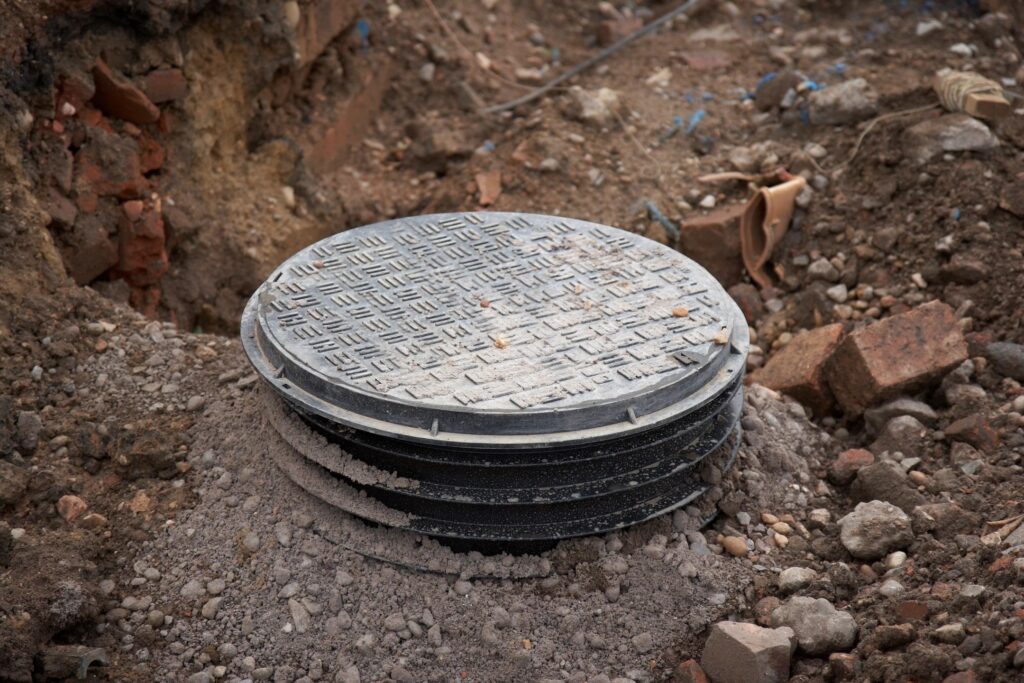
Meigs Health Today: Breaking Down the Most Common Household Sewage Treatment Systems
by Daschle Facemyer, SIT
Most septic systems in the area consist of a septic tank to leach field or an aerator tank to a direct discharge. A lot happens within these sewage treatment systems to treat your wastewaterso that it is environmentally safe to leach into the soil or be discharged back into a stream or ditch. It all starts when you flush your toilet and when the wastewater goes into your septic tank.
In the conventional septic tank to leach field system, wastewater flows into the tank allowing any grease and lighter solids to float to the top creating what is called the scum layer.These solids break down over time and fall to the bottom of the tank creating the sludge layer.The sludge remains at the bottom of the tank and continues to build up until the tank needspumped out by a registered septage hauler. Septic tanks may have one or two compartments that have inlet and outlet baffles. These baffles hold the scum and sludge inside the tank and allowswastewater to flow out into the leach field. Newer systems will have a filter in the outlet baffle to make sure no finer solids leave the tank. Older septic systems usually do not have filters, but the outlet baffle must be in place or sludge will escape and plug up the leach field leading to a failed system. Treatment continues after the wastewater leaves the septic tank and enters the soil absorption component or leach field. The two most common types of soil absorption components consist of a gravel and pipe leach field or a gravel-less chambered leach field. The pipe and gravel leach fields have been around for decades and are relatively larger in size compared to the chambered leach fields. Wastewater flows equally into the pipes within the leach field and drainsinto the surrounding soil where naturally occurring microbes attach and grow on the surface of soil and consume the organic matter and nutrients as their food. Microbes are microorganisms that include bacteria, fungi, and protozoa. The gravel-less chambers are a fairly new type of leach field and is being used more than the gravel and pipe leach field. Gravel-less chambers do not take up as much area compared to the gravel and pipe. They are domed-shaped with an open bottom allowing a greater contact between the wastewater and the soil and the microbes.
The other commonly used system in our area is an aerator tank that may discharge to surface water or ditches. The aerator tank will have similar components as a regular septic tankbut will have an extra compartment with a motor that mixes the wastewater and shoots oxygen into the water. The additional oxygen increases the aerobic bacteria activity within the system and helps breakdown and treat the wastewater before leaving the tank. Aerator systems may have additional treatment before the wastewater is discharged. All aerator systems should have a chlorinator for the final treatment which will consist of a T-section pipe, that holds chlorine tablets for final disinfection of the wastewater. Newer aerator systems will have an ultravioletlight for disinfection instead of a chlorinator. This treatment saturates the wastewater with anultraviolet light killing off viruses and bacteria before being discharged. All aerator systemsrequire more maintenance compared to a septic tank and a soil absorption component. Aerator systems installed after 2007 require additional permitting with the Ohio Environmental Protection Agency, service contracts with a licensed provider and continuous monitoring.
If you have any questions regarding your septic system or any questions on what type of system you have please contact the Meigs County Health Department at (740) 992-6626 Monday-Friday (8 a.m-4 p.m).
